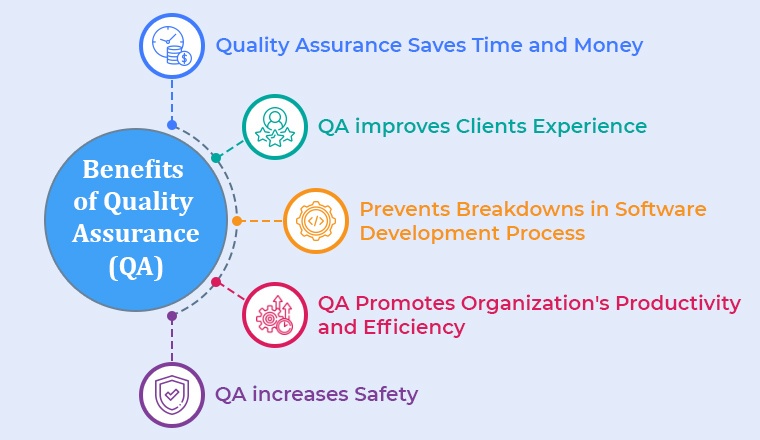
Software is a key component of the success of businesses across all industries in the fast-paced business environment of today. Whether it be an online platform, an internal system, or a mobile application, software has become a crucial component of daily business. However, making sure the program operates faultlessly and without any faults might be difficult. At this point, spending money on software quality assurance (QA) is crucial. Companies might ultimately save critical time and money by giving priority to QA efforts.
The Cost of Poor Quality Software
-
Increased Development Time
When software is not thoroughly tested during the development phase, it often leads to numerous bugs and glitches. These issues can significantly slow down the development process as developers spend more time fixing problems rather than implementing new features. As a result, deadlines are missed, and valuable resources are wasted.
-
Customer Dissatisfaction
Poorly functioning software not only affects internal processes but also impacts customer satisfaction. Customers expect reliable and user-friendly software experiences. When they encounter frequent crashes or encounter functionality issues, their trust in the company diminishes. This can lead to negative reviews, decreased customer loyalty, and potential loss of business opportunities.
-
Increased Support and Maintenance Costs
Software that is not adequately tested often requires extensive support and ongoing maintenance. The cost of addressing customer complaints, fixing bugs, and providing continuous updates can quickly add up over time. Investing in QA upfront can help identify potential issues early on and reduce these ongoing support costs.
The Benefits of Software QA
-
Early Detection of Issues
Through comprehensive testing methodologies, QA teams can identify potential issues before they impact end-users or disrupt critical business processes. By catching bugs early on in the development cycle, companies can save valuable time and resources that would otherwise be spent on fixing them later.
-
Improved User Experience
Software QA goes beyond finding and fixing bugs. It also focuses on ensuring a seamless user experience. By thoroughly testing software from the user’s perspective, QA teams can identify usability issues, optimize performance, and enhance overall satisfaction. Investing in QA helps companies deliver software that meets and exceeds customer expectations.
-
Reduced Development Costs
Although investing in QA may seem like an additional expense, it ultimately leads to reduced development costs in the long run. By catching issues early on, companies avoid the need for extensive rework and redevelopment. This translates into saved time and resources that can be allocated to other critical business areas.
Best Practices for Effective Software QA
-
Implementing Test Automation
Test automation allows repetitive tasks to be automated, saving time and effort for QA teams. By automating regression testing and other routine processes, companies can ensure faster releases without compromising quality.
-
Continuous Integration and Delivery (CI/CD)
Implementing CI/CD practices ensures that code changes are continuously integrated and tested throughout the development process. This approach helps catch issues early, encourages collaboration between development and QA teams, and ensures a smoother release cycle.
-
Collaboration between Development and QA Teams
Building strong collaboration between development and QA teams is crucial for effective software QA. Encouraging open communication, sharing knowledge, and involving QA from the early stages of development helps identify potential issues sooner and fosters a culture of quality throughout the organization.
“Investing in quality assurance is like saving money in the bank. You may not see it grow every day, but it prevents unexpected losses.” – Unknown
Investing in Software QA is not just an added expense; it’s a strategic decision that can save companies both time and money in the long run. By prioritizing quality throughout the software development lifecycle, organizations can reduce development costs, improve customer satisfaction, and avoid the pitfalls of poor-quality software. Embracing best practices such as test automation, continuous integration, and collaboration between development and QA teams will lead to more efficient software development processes and ultimately contribute to the overall success of the company.
If you are interested in quality software development or any other services explore our range of Esourceful website services. At Esourceful, we provide services from web design to e-commerce solutions, we’ve got you covered. Let’s start building your digital success story today! Get in touch!

